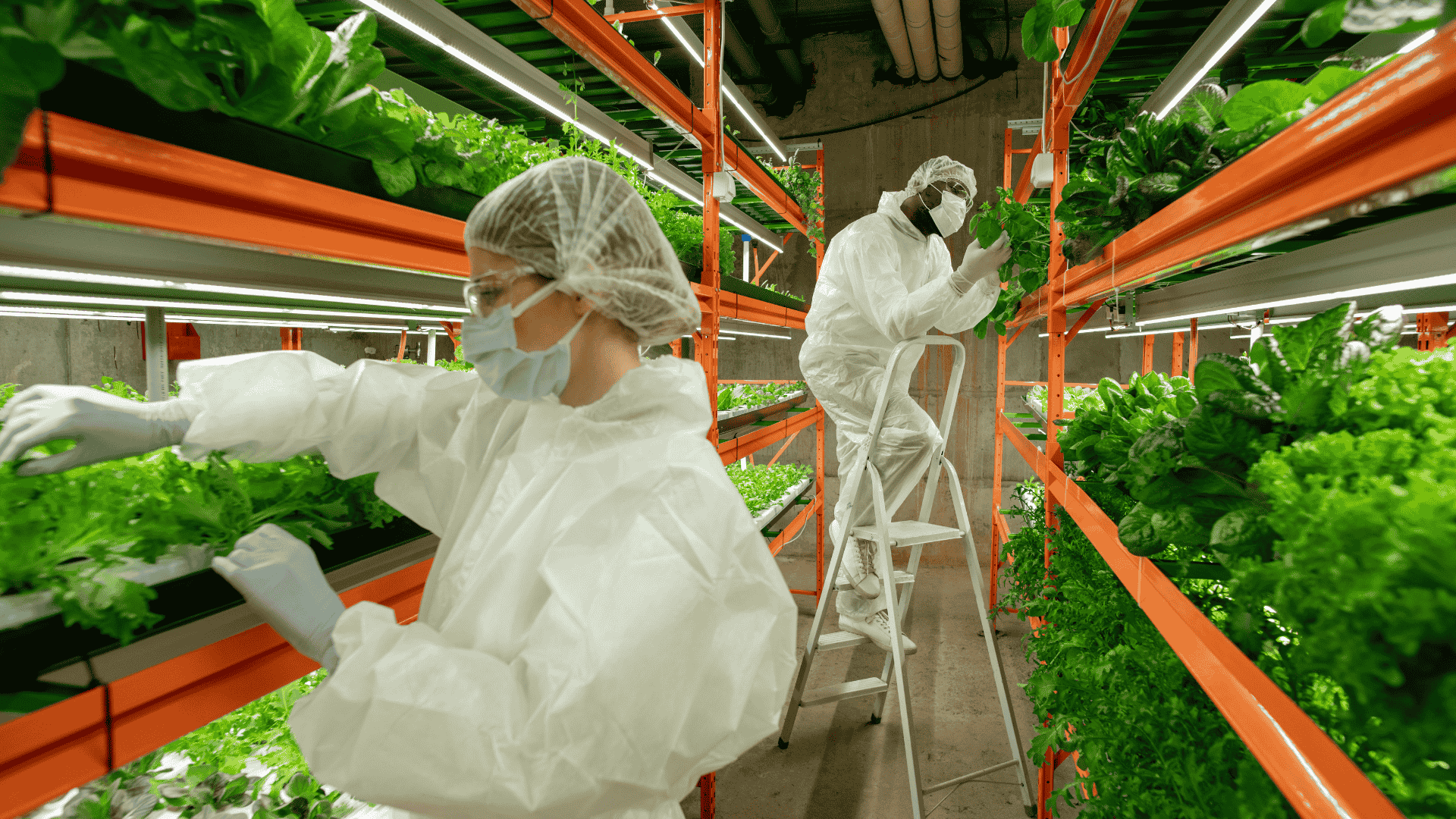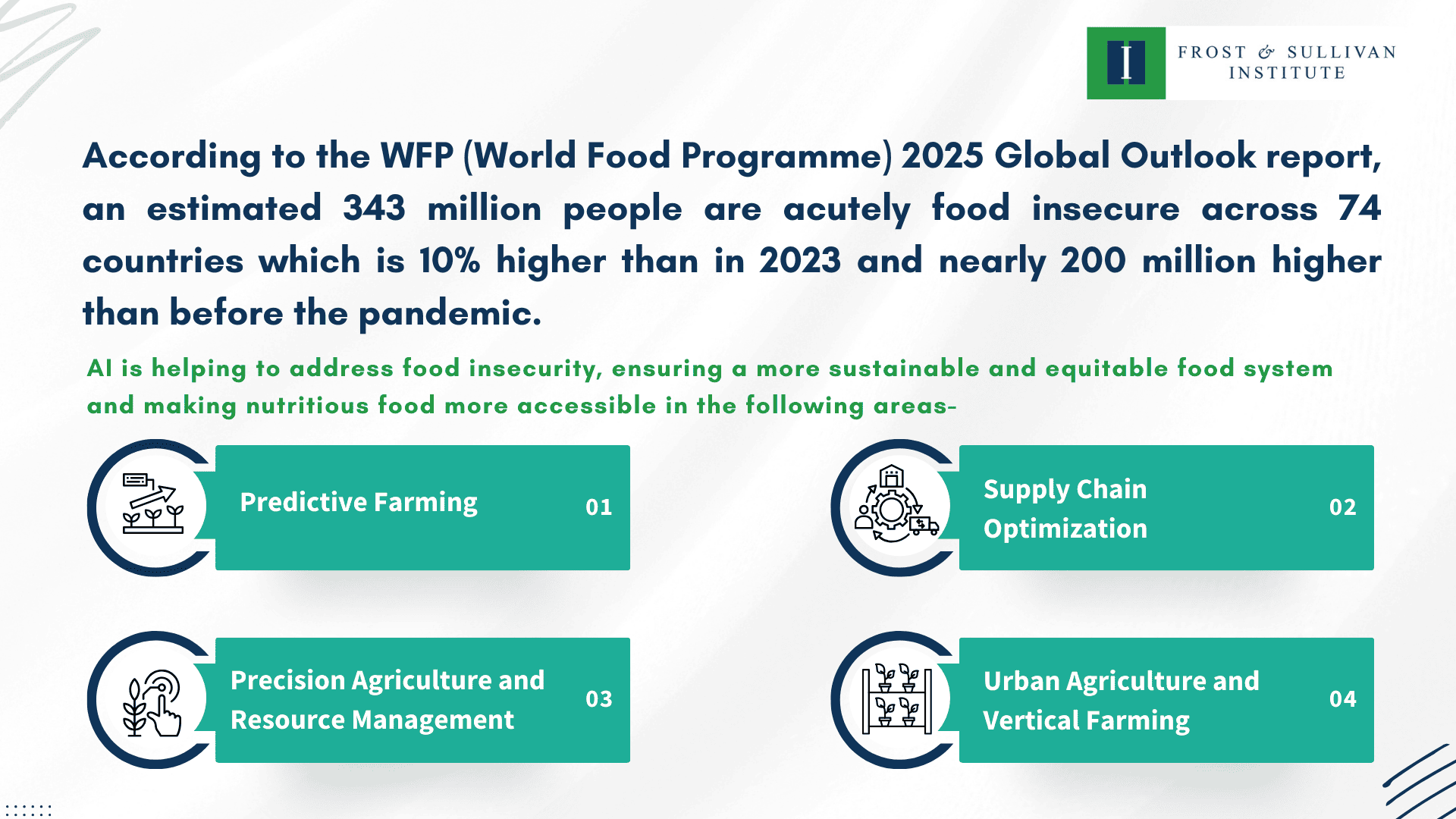
28 Jan How Artificial Intelligence is Revolutionizing Food Security: From Predictive Farming to Supply Chain Optimization
As the world’s population grows, agricultural productivity must increase while simultaneously addressing challenges such as climate change, resource depletion, and supply chain inefficiencies. Food security, the reliable access to sufficient, nutritious food, remains one of the most pressing global challenges. In this context, artificial intelligence (AI) is emerging as a transformative force in enhancing food security. From predictive farming techniques to optimization of supply chains, AI is helping to address these complex challenges, ensuring a more sustainable and equitable food system.

Predictive Farming: Leveraging Data for Smarter Agriculture
Predictive farming is one of the most promising areas where AI is making a significant impact. Traditionally, farmers relied on experience, intuition, and seasonal patterns to make critical decisions about planting, irrigation, and harvesting. However, these methods often lack precision and can lead to inefficiencies, particularly in rapidly changing weather conditions. AI offers a more data-driven approach, utilizing machine learning algorithms and vast amounts of environmental data to provide real-time insights and forecasts. Additionally, AI systems are also enhancing farmers’ ability to forecast potential issues such as pest infestations or drought and these AI-powered tools enable farmers to predict the optimal planting and harvesting times with greater accuracy.
Supply Chain Optimization: Reducing Waste and Improving Efficiency
AI is revolutionizing the way food systems are managed through supply chain optimization. The global food supply chain is complex, involving numerous stages from production to distribution, often spanning across borders and continents. Inefficiencies, such as food spoilage, waste, and uneven distribution, remain significant problems, particularly in developing countries. According to the Food and Agriculture Organization (FAO), roughly one-third of food produced globally is lost or wasted, translating to approximately 1.3 billion tons of food annually. AI can enhance logistics by monitoring and managing the cold chain, ensuring perishable goods remain fresh during transit. Through predictive analytics, AI can forecast demand, optimize inventory management, and adjust distribution strategies to ensure food reaches consumers most efficiently.
Precision Agriculture and Resource Management
Beyond predictive farming and supply chain management, AI is also pivotal in improving food security through enhanced resource management. Precision agriculture, a practice that uses AI and other advanced technologies such as drones and satellite imaging, enables farmers to monitor and manage resources such as water, fertilizer, and pesticides with a level of precision previously unattainable. By using AI to analyze satellite imagery and sensor data, farmers can identify specific areas of a field that require attention, reducing the overuse of inputs and minimizing environmental damage.
Urban Agriculture and Vertical Farming
AI is also helping to tackle food insecurity in urban areas through urban agriculture and vertical farming systems. These innovative approaches to food production, supported by AI, are becoming increasingly popular in cities where space is limited, and the demand for local food is high. AI-driven technologies are used to control the environmental conditions of these systems, such as light, temperature, and humidity, ensuring optimal growth conditions for crops.
Addressing Barriers to AI Adoption
Despite the transformative potential of AI in food security, there are also challenges to consider. Access to technology, data privacy concerns, and the digital divide between developed and developing nations remain significant barriers to the widespread adoption of AI in food systems. While AI is expected to contribute to the global agriculture sector, smallholder farmers, especially in low-income countries, may face difficulties in accessing these technologies. As such, efforts to implement AI solutions must be paired with initiatives to bridge the digital divide, ensuring that small-scale and marginalized farmers can also benefit from these innovations.
Artificial intelligence is undoubtedly revolutionizing food security by providing innovative solutions to some of the most complex challenges facing global food systems today. At Frost and Sullivan Institute, we believe that for AI to realize its full potential in ensuring global food security, it must be adopted in a way that is equitable, accessible, and inclusive. By addressing these challenges and strong collaboration between governments, tech companies, and farmers, AI has the potential to be a powerful tool in achieving a more food-secure world, where everyone has access to the nutrition they need to thrive.
Blog by Shreya Ghimire,
Research Analyst, Frost & Sullivan Institute
